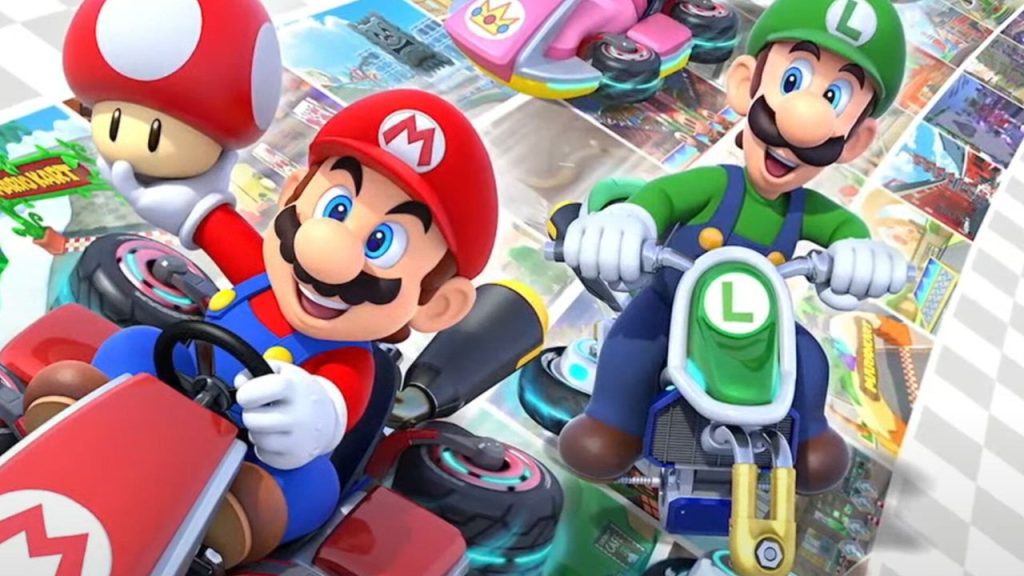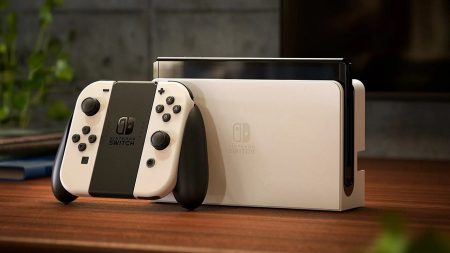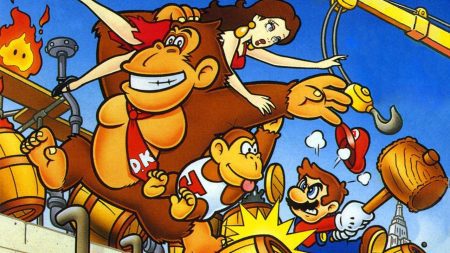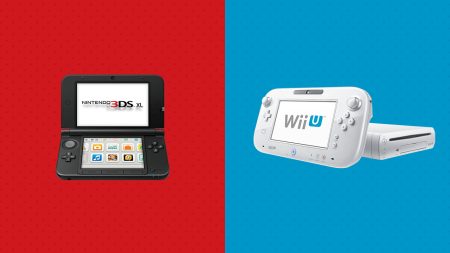The Ultimate Party Game
If there’s one universal truth about video game players of all stripes, it’s that they generally like (or potentially LOVE) Mario Kart. Think about it: Basically every single person you know is at least familiar with the series, and whether they are the most hardcore or the filthiest of casuals, they’ve probably played (and enjoyed) a Mario Kart game.
Though it lacks some of the cultural cache (at least within extremely online circles of game enthusiasts) found in other major Nintendo franchises such as Super Mario, The Legend of Zelda, and Metroid, Mario Kart consistently dominates sales charts and likely has the farthest reach of anything Nintendo has done outside of Pokémon. One could even argue that every single Nintendo platform since the SNES has been defined by its Mario Kart entry: Mario Kart DS is perfect for portable play; Double Dash is just as wacky and creatively “out there” as anything on the GameCube; and Mario Kart Wii has optional motion controls that most people hate.
Why Mario Kart Is So Great
Personally, I love Mario Kart as a series, and actually think it’s somewhat underrated. It may seem weird to call one of the best-selling franchises of all time underrated, but I feel like Mario Kart is more than worthy of all its success. While carrying a largely family-friendly reputation, the series offers a number of genuine competitive challenges, with the higher level of play requiring clever tactics and pinpoint execution.
Beyond the stellar gameplay, no other racing franchise achieves quite the same level of aesthetic brilliance and variety. Even the blandest of ice or desert themes contain myriad visual delights, unique hazards, and heart-pumping music. Even the blandest race tracks contain delightful Easter Eggs and background imagery; simply looking around during a race can be just as enjoyable as, well, the actual race.
More than anything, though, Mario Kart takes the “with” part of “fun with friends” seriously, as each title provides just the right level of challenge to reward the most skilled players and just enough mayhem that even a novice has an outside chance of winning. Unlike Mario Party (too random) or Super Smash Bros. (greatly favors the experienced), Mario Kart has long offered an excellent balance of fun and competition, and it doesn’t take long for a noob to acclimate or for a veteran to become a master.
But… Which Mario Kart Is Best????
Despite what online arguments would have you believe, there isn’t really a bad entry in the franchise, and every single new release feels like a major event inside and outside of gaming culture. Sure, if you want a more hardcore, competitive racing series, you’ll have to look elsewhere, but if you want to play a thoroughly enjoyable and engaging racing title, you can’t go wrong with basically any Mario Kart.
All 8 Mainline Mario Kart Games Ranked
With that said, I will present to anyone bored enough to read this article my 100% definitive ranking of every single mainline Mario Kart title. Just to reiterate: I like all of these games, and I believe each one has unique qualities that make it worth playing (or replaying).
(Side note: I’ve opted to exclude Mario Kart Tour, Mario Kart Live, and all the arcade Mario Kart titles, since none of them are fully digital Nintendo console/handheld experiences. Also, Tour sucks.)

8. Mario Kart: Super Circuit (Game Boy Advance)
There’s no shame in being the worst entry in a fantastic series. But Super Circuit is easily at the bottom, due largely to its unimaginative course design, forgettable music, and wonky controls. Still, the GBA entry has its positives, as it was the very first portable Mario Kart experience and even includes all of the courses from Super Mario Kart as unlockables, giving the game plenty of replay value. It’s a fun time, but I don’t think you’re missing too much if you forego this one.
Best Original Course: Boo Lake

7. Mario Kart 64 (Nintendo 64)
The placement of what many consider a certified classic so low on this list will surely spark controversy, but again: I like this game! It’s awesome! Mario Kart, much like many other Nintendo franchises, made a terrific transition into 3D, and Mario Kart 64 remains one of the most iconic games on the platform, especially when it comes to couch multiplayer.
Unfortunately, the basic 3D racing mechanics improved over time in basically every subsequent entry, making Mario Kart 64 somewhat of a relic now. As much as I enjoy playing 64, I can’t in good conscience say it’s better than any other 3D Mario Kart title, and I’m not even sure it’s the best racing game on its own console.
Best Original Course: Yoshi Valley

6. Super Mario Kart (SNES)
The one that started it all, Super Mario Kart not only kicked off the most successful spin-off series in video game history; it inspired dozens of other racing games and franchises that have consistently tried (with mixed results) to emulate the formula.
The original Mario Kart had no intention of presenting a simulated racing experience or a tough-as-nails multiplayer challenge. Instead, it created an environment of fun and mischief with a dose of healthy competition. The 2D visuals hold up beautifully decades later, the soundtrack remains iconic, and the courses (while largely simplistic by modern standards) successfully translated the language of Mario games into landscapes perfect for speedy, chaotic gameplay.
That said, the controls are a little rickety compared to other games in the series, and some of the later courses on 150cc can be frustratingly difficult. Super Mario Kart was the first racing game I ever played, so it holds a special place in my heart, but I won’t lie to you and say it feels just as good to play today. Still, I love it dearly.
Best Original Course: Rainbow Road (the OG)

5. Mario Kart Wii (Nintendo Wii)
In many ways, Mario Kart Wii felt simultaneously like a welcome improvement and a step back. It added trick boosts, expanded the number of competitors from eight to 12, presented tons of new courses, added motorbikes to the mix, and offered more in-game customization options (including playable Miis). Still, it abandoned the dual-racer mechanic from its predecessor in favor of streamlining the experience, and while the newly offered motion controls were fun at first, I dropped them pretty quickly in favor of one of the more standard control options.
Don’t get me wrong: Mario Kart Wii is fun as hell. Online racing was a blast, the new courses (and re-imagined old ones) came with new kinds of clever hazards and secrets, and the battle mode stages are some of my favorites in the series. Though I wish Wii hadn’t made all the changes it did, many of the changes were welcome and ultimately improved the series going forward.
Best Original Course: Coconut Mall
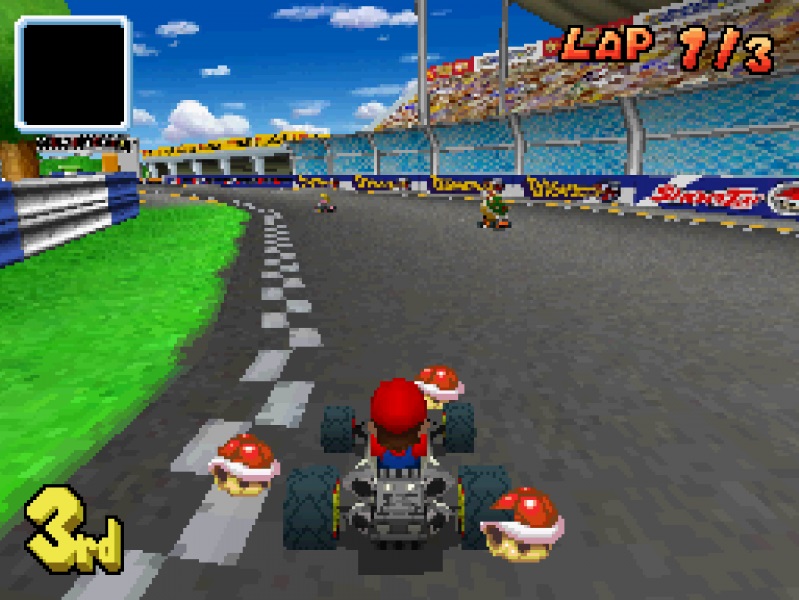
4. Mario Kart DS (Nintendo DS)
While not the first handheld entry in the franchise, Mario Kart DS maximized the power of its hardware to present fully 3D racing gameplay, online capabilities, and some phenomenal character animations. Notably, this was the first Mario Kart to have classic courses playable from the get-go, and it managed to recreate some of the best GameCube courses to enjoy in the palms of your hands. Each race is extraordinarily well-balanced, with just the right level of competition against CPUs without feeling like a breeze or a slog.
In addition, a good amount of content in Mario Kart DS has yet to be revisited in later entries, including a single-player challenge mode (with boss fights!), R.O.B. as a playable racer, and even the ability for two DS owners to play the game locally with only one cartridge. Sure, it may seem like just another “old game” nowadays, but Mario Kart DS still rules and has a lot to offer longtime fans of the series.
Best Original Course: Airship Fortress
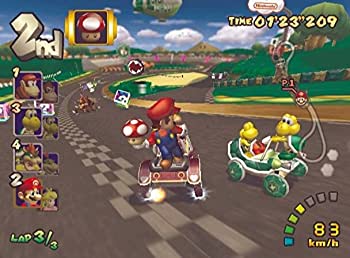
3. Mario Kart: Double Dash!! (GameCube)
Is Double Dash the best racer of all time? No, and obviously from its placement on this list, it isn’t even the best game in its own series. It might, however, be the most fun racing game I’ve ever played, at least in terms of multiplayer chaos with friends. In the GameCube edition of this beloved franchise, each kart had two characters on it, with one in charge of controlling the movements of the vehicle and the other using items (and bashing nearby karts with the L or R button). No other mainline game in the series has even attempted an idea such as this before or since.
In single-player mode, this is a neat yet unnecessary feature. Sure, it’s cool crushing a double-item box and swapping back and forth between characters on the same kart, but ultimately you’re still basically just playing Mario Kart. The courses are obviously great and the mechanics are fairly smooth, but that’s true of basically every Mario Kart (to be honest, the core racing mechanics in Double Dash are not among the series’ best).
When it comes to multiplayer, however, Double Dash offers incredible co-op gameplay, where two players controlling the same kart have to communicate effectively and strategize accordingly to win each race. In addition to making everything more chaotic and exhilarating, the double-character approach creates a new level of competitive play, where winning is just as much about knowing routes and executing drifts as it is about teamwork and cooperation. Also, certain special items are tied to particular racers; pairing the right characters can be crucial to success, thus adding another layer of complexity to each Grand Prix. (For example, Toad and Toadette have the golden mushroom as their special item, whereas Mario and Luigi have fireballs.)
Double Dash is more than a great Mario Kart title; it’s easily the most unique, and one whose appeal grows more and more with every new entry that fails to include its kookiest ideas. On a console defined by some of Nintendo’s biggest swings, Double Dash is among one of its most successful endeavors, and one that I cherish to this day.
Best Original Course: DK Mountain
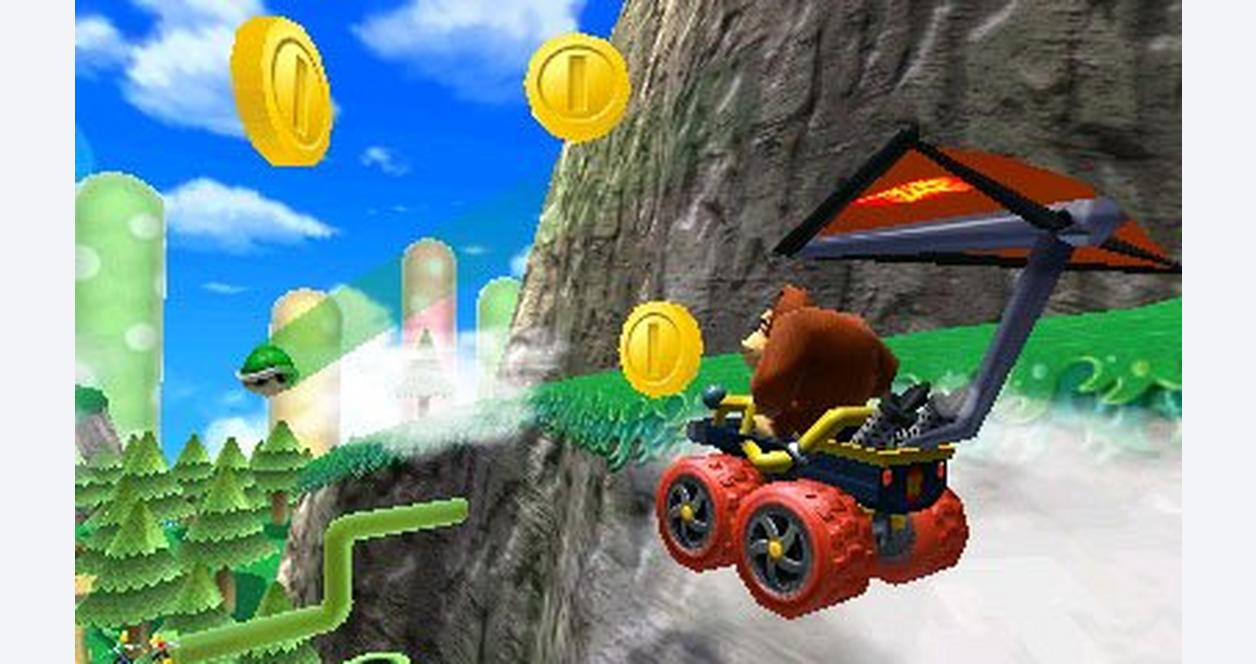
2. Mario Kart 7 (Nintendo 3DS)
It may have taken the 3DS some time to really gain momentum, but with Mario Kart 7 hitting the platform in its inaugural year, everyone knew the handheld was off to a good start. In addition to having some of the smoothest controls and most exhilarating original courses in the series, MK7 introduced some of the best new ideas the series had seen up to that point: gliders, underwater sections, and courses where each lap is a different segment of the track. Additionally, the title offers a particular mode of play not seen since: first-person mode, which may have been a novelty but was an interesting idea nonetheless.
I wouldn’t call Mario Kart 7 the most ambitious game in the series, especially since it was largely a better version of DS and Wii put together, but everything in the game works together so nicely. Every race is a blast, online play worked fairly seamlessly, the new courses presented cool new themes and challenges, and the mechanics were improved from Wii just ever so slightly to create one of the best handheld racing games of all time.
Best Original Course: Rainbow Road

1. Mario Kart 8 and 8 Deluxe (Wii U/Switch)
For a while, Mario Kart 8 was easily the best game in the series. Building off the massive success of its predecessor, MK8 presented even better courses, better controls, and excellent new items like the boomerang, piranha plant, and super horn. In addition, the newly introduced anti-gravity mechanics not only ratcheted up the spectacle of new tracks—they greatly enhanced classic courses, allowing the player to experience Toad’s Turnpike and Royal Raceway from an entirely new perspective.
Meanwhile, Mario Kart 8 also introduced something Nintendo was fairly late to embrace: downloadable content. The DLC courses for the original Mario Kart 8 added a ton of new great tracks and playable characters from other Nintendo franchises, such as Link from The Legend of Zelda and Isabelle from Animal Crossing.
The one major blemish? Battle mode in MK8 was astoundingly bland, as Nintendo decided to forego dedicated battle arenas in favor of just using some of the race tracks as battle arenas. Such a bafflingly bad move made multiplayer matches slow, boring, and completely lacking in the chaos that defined battle mode in years past.
It all ended up being OK, though, when Nintendo re-launched the game as Mario Kart 8 Deluxe for 2017 on its brand-new Switch console. While some customers surely scoffed at the notion of buying this game again, Deluxe fixed battle mode with dedicated battle arenas; added new playable characters such as the inklings from Splatoon; provided new accessibility options including auto-accelerate; and even allowed for racers to hold two items at once (similar to Double Dash). Deluxe quickly outclassed its Wii U predecessor to become the definitive way to play the game, and has since become the top-selling racing game of all time.
But wait… there’s more! Nearly five years after the Switch launched, Nintendo announced that even MORE courses would be coming to MK8D, including some Tour-exclusive tracks and a handful of brand-new ones. It may seem bizarre that a game that was originally released in 2014 is still getting extra content almost a decade later, but every new booster course pack drop comes with renewed excitement for this game, and brings back my excitement for this franchise every single time. It doesn’t get much better than Mario Kart 8 Deluxe, and Mario Kart 8 Deluxe seems to get better with each passing season.
Best Original Course: Dolphin Shoals
What’s your favorite Mario Kart game? Let us know in the comments!
Sam has been playing video games since his earliest years and has been writing about them since 2016. He’s a big fan of Nintendo games and complaining about The Last of Us Part II. You either agree wholeheartedly with his opinions or despise them. There is no in between.
A lifelong New Yorker, Sam views gaming as far more than a silly little pastime, and hopes though critical analysis and in-depth reviews to better understand the medium's artistic merit.
Twitter: @sam_martinelli.


